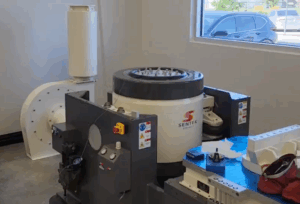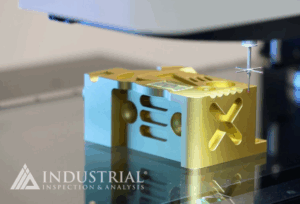Precision Laser Scanning Service
IIA’s state-of-the-art 3D laser scanning services allow you to compare the actual condition of a manufactured part or component to the nominal condition as defined by engineering drawings and blueprints, metal or film templates, digital files and 3D CAD models, or even a master tool or part.
How it Works
With 3D scanning, a laser is projected onto the surface of an object and a camera captures the reflection. The laser can take the form of a single point, a line, or an entire field of view. When the reflection is captured, each point is triangulated, measured, and recorded, resulting in a 3D rendering of the shape and surface measurements of the object.
3D Laser Scanning Applications
3D laser scanning is the first step toward a variety of technical applications, including reverse engineering and scan-to-CAD comparison. 3D scanning can be especially beneficial for:
- Airfoil shapes, such as turbine and impeller blades
- Organic geometry, such as the human form, dental impressions, and archaeological artifacts
- Contoured exteriors and interiors of automobiles
- Any complex, non-prismatic geometry, with or without variable curvature
Data capture with 3D laser scanning is efficient, flexible, and highly accurate. Using a wide array of tools and technologies, our team can deliver dependable data on almost anything — from the face of a penny to the contours of a fighter jet.
In this video, watch one of our 3D laser scanning systems at work.
Recommended Videos To Watch







